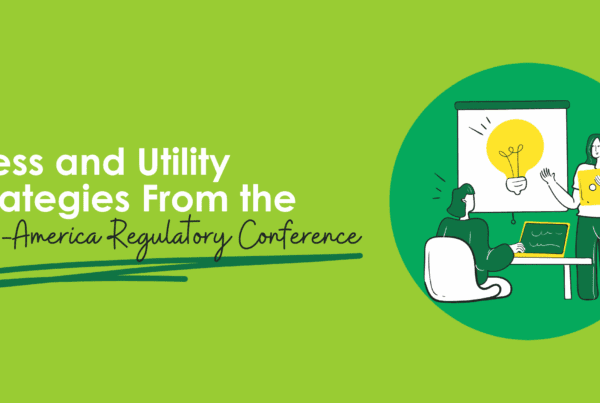
Recently I have been preparing a presentation on a broad array of energy efficiency issues for executives and facility managers of large commercial and industrial facilities. I was wisely advised by the utility product manager to keep it engaging and interactive. I think I’ve whined in this blog before about how I despise dopey group exercises. Sorry, can’t make it. I have a teleconference. I have a plane to catch. I think my tuberculosis may be flaring up.
So instead, I am thinking, as was also suggested, that rather than sending small groups at this session into the corner to play tinker toys, let’s do something that will spur critical thinking and yield information for both the participants and me. After all, for the group exercises, it is a waste of time developing a case study, a program, a plan, etc., that I don’t like. I’m all for spurring thought, critical and creative thinking, and sharing ideas. Participants have to contribute, but the trick is to make it worth their time. At the outset, I will explain this will be a two-way street – a discussion and not a monologue. These customers need to contribute, and that is the topic of this post – the customer has to do their part in an energy efficiency venture to maximize success.
The above presentation prep, and this article about de-risking energy efficiency, establish the subject of this post. To summarize the article, it essentially describes how it is difficult to get financing for energy efficiency because of the risk and lack of collateral[1]. Although the bank won’t count it for anything, a great way to reduce risk is to have an engaged customer.
Going off road a little, I think the claim that lack of financing is a barrier to energy efficiency, in many cases, is a red herring, diversion, smoke screen, bologna, a hunk of Braunschweiger. In the vast majority of scenarios, capital improvements are needed anyway. The chiller is shot; I need a new one anyway. I’m building a new building, and I need financing anyway.
Organizations figure out how to get money for these things, and spending a little extra in some cases for energy efficiency is irrelevant. Does the bank need to know the chiller costs $220,000 rather than $200,000 for the cheapest inefficient model available? It’s the same number. I have also witnessed a rural community school board figure out how to scrape together money for a retrocommissioning project. Thinking about it, the cost for energy efficiency is low – it is either incremental, or it is service-oriented with very high ROI and not capital oriented. So, I’m not buying (pun alert) these financing barriers. They are merely deflections.
Continuing on with the de-risking theme, it is up to the end user to help ensure success. I will write more about this in a separate post, but as I’ve said before in the Energy Rant, virtually every energy efficiency project includes a behavioral element from the end user. Energy use cannot be squeezed in one place and bulge out somewhere else in the form of wasteful behavior, which may include changing setpoints and running things longer. Foregoing the cheese on a burger and skipping the soda in exchange for supersizing the fries gets you nowhere.
Energy efficiency is not like buying a nice meal or a pint of Bully Goat Red Ale from Columbus, OH.[2] For these I pay the price and sit back and enjoy. A successful project requires some level of responsibility by the customer – preferably from a person who is solely responsible for getting the savings, or a fanatic on the ground and in peoples’ face when they’re not behaving. Depending on the position of this person, they may need leverage from a higher authority in the organization to carry out policy, behavior and financing as needed.
[1] The reason for this is banks want collateral six ways to Sunday for a loan. You have to prove you don’t need the loan to be eligible for one.




